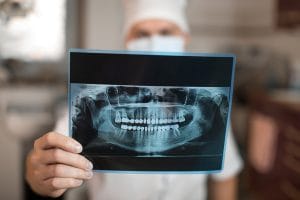Intraoral Camera
Most patients, are extremely familiar with the latest and most innovative technology, especially our younger patients. Moreover, people are very comfortable receiving treatments at high-tech practices. Computer and television screens are currently the primary medium for receiving and processing information.
Intraoral camera technology is used by Dr. Huelsman for helping patients gain a deeper understanding of their diagnoses. This type of camera is very small in size. In fact, an intraoral camera can be just a few millimeters in length. With an intraoral camera, we can see clear and precise images of your teeth, soft tissues and overall mouth interior. This allows us to accurately identify and treat oral health issues. With enlarged images that are both clear and well-defined, it becomes possible to see important details that might otherwise get overlooked. This advanced technology can also expedite the diagnostic process and limit the amount of time you have to spend in the chair.
We can save images in the intraoral camera to our office computer so that we have a permanent record of your treatments. We can print these visual treatment records out for you, your lab, your insurance company or other specialists.
Digital X-Rays
Dr. Huelsman is committed to carefully choosing which radiographs are taken and when. With radiographs, we can see all of the things that are not visible to the naked eye. With radiographs, it is possible to identify cavities that are between the teeth. We can also check the health of the underlying bone structures and determine the bone level. These images also allow us to examine the tooth nerves and roots, diagnose tumors, cysts and lesions and assess any damages that trauma has caused.
In terms of treating, diagnosing and maintaining oral health, dental radiographs are invaluable tools. There is little exposure time for these images. Dr. Huelsman has access to Digital Imaging Technologies right within our practice. Exposure time with digital imaging is approximately 50 percent less that of traditional radiographs. There is also lots of helpful diagnostic information that we can retrieve when using digital imaging. It may help us better see cavities.
Not only do we have the ability to store patient records with digital imaging, but we can also quickly transfer these images to insurance companies and specialists when needed.
Given that we view images on a computer monitor, digital X-rays allow for more precision as opposed to lifting 35mm film up to the overhead lights. Best of all, digital X-rays expose you to 1/6th the radiation of more dated diagnostic processes.
CEREC – One Visit Dentistry
Truth is, few people have perfect teeth or teeth that are absolutely free of fillings and decay. You probably have one or two fillings already. Fillings do exactly what their name implies, which is fill a hole or cavity in a tooth structure that has been left by decay or the excavation of a decayed area. More often than not, fillings are comprised of metal materials that can weaken the tooth, go bad or develop decay around or under them. In fact, over the next two years, 1.2 billion metal fillings will have to be replaced. Thousands of dentists throughout the world have been using the CEREC method since 1987 to replace fillings and o restore broken, weakened and decayed teeth to their original strength and aesthetic beauty. Best of all, these things can all be accomplished in a single appointment with tooth-colored, all-ceramic materials.
Precision Dentistry
When you receive care at our practice, you can trust that Dr. Huelsman and his team members will be using advanced technology to ensure superior dental care.
We use high-power microscopes for optimal precision.
Micro-surgery uses a microscope similar to the one that an ophthalmologist uses in order to produce dental restorations that supply a precise fit and finish. This is a level of care that can’t be gained with the naked eye.
Beyond allowing for precise, up-close work, this microscope projects a beam of light directly onto the tooth surfaces, which minimizes the glare for you.
A lot of dentists are using drills, or air-driven, hand pieces. Although these are sufficient for most procedures, these whiny, hand-held devices are incapable of rotating perfectly smooth due to a certain degree of non-concentricity.
Our electric hand-pieces are ideal for the most precise portions of restorative treatments. They create extremely precise interfaces between the teeth and new restorations such as fillings, veneers or crowns. They also provide enhanced comfort. With better performing tools, both noise and vibration are minimized as well.
WE LOVE OUR PATIENTS
We appreciate the opportunity to provide you with the best possible service and treat you like family and we’re proud of the reviews we receive from our patients!
CONTACT US
CONTACT US
